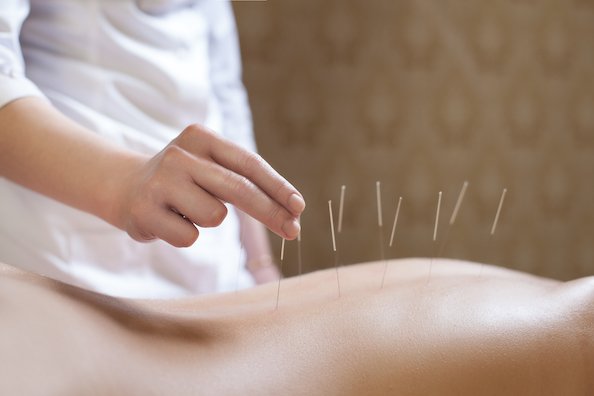What is Acupuncture and How Does it Work?
Acupuncture Pain Relief - Murphy Chiropractic and Wellness Center - Plainfield IL
Acupuncture is a form of treatment that involves inserting very thin needles through a person's skin at specific points on the human body, to various depths.
Research indicates it can help alleviate pain, and it's used for a vast assortment of other complaints.
However, as stated by the National Center for Complementary and Integrative Health (NCCIH), there is limited evidence for its efficacy in regions other than pain.
How acupuncture actually works for a variety of problems remains unclear. Some people today claim it works by balancing vital energy, but others believe it's a neurological effect.
Acupuncture remains contentious among Western medical physicians and scientists.
What is acupuncture?
An acupuncturist will insert needles into a person's body with the goal of balancing their own energy.
This, it's claimed, can help boost wellbeing and may cure some illnesses.
Requirements it is used to include different kinds of pain, such as headaches, blood pressure problems, and whooping cough, amongst others.
How does this function?
Illness is reported to be the consequence of an imbalance of good and bad forces in our lives. Falls and injuries are easier to iddentify.
These meridians and energy flows are accessible through 350 acupuncture points in the human body.
Inserting needles into these points with proper combinations is said to bring the power flow back into proper balance.
There is no scientific proof that the meridians or acupuncture points exist, and it is hard to show that they do or don't, but many studies suggest that acupuncture works for some ailments.
Some specialists have used neuroscience to explain acupuncture. Acupuncture points are seen as places where nerves, muscles, and connective tissues can be stimulated. The stimulation increases blood circulation, while at precisely the exact same time triggering the action of the human body's natural painkillers.
It's challenging to install investigations utilizing proper scientific controls, due to the invasive nature of acupuncture. In a clinical study, a management group would have to undergo sham treatment or a placebo, for outcomes to be contrasted with people of acupuncture.
A number of studies have concluded that acupuncture offers similar advantages to a patient as a placebo, but others have indicated that there are some real advantages.
Uses
Research completed in Germany has demonstrated that acupuncture can help relieve tension headaches and migraines.
The NCCIH notice that it has been proven to assist in cases of:
They list added disorders that may benefit from acupuncture, but which require further scientific evidence.
In 2003, the World Health Organization (WHO) listed numerous states in which they say acupuncture has been shown successful.
These include:
High and low blood pressure
chemotherapy-induced nausea and vomiting
some gastrointestinal conditions, such as peptic ulcer
painful intervals
dysentery
allergic rhinitis
facial pain
morning sickness
rheumatoid arthritis
sprains
tennis elbow
sciatica
dental pain
reducing the risk of stroke
inducing labor
Other conditions for the WHO say that acupuncture may help but more evidence is needed include:
The WHO also suggests that it might help treat numerous ailments, such as a few urinary tract infections and epidemic hemorrhagic fever.
They point out, but that"only federal health authorities can determine the diseases, symptoms, and conditions for which acupuncture treatment could be recommended."
Benefits
Acupuncture can be beneficial because:
Performed correctly, it is safe.
There are very few side effects.
It can be effectively combined with other remedies.
It can control some types of pain.
It might assist patients for whom pain medications aren't appropriate.
The NCCIH advise people not to use acupuncture rather than visiting a conventional healthcare provider.
What to expect
An acupuncturist will examine the patient and evaluate their condition, insert one or more thin, sterile needles, and offer guidance on self-care or other complementary treatments, such as Chinese herbs.
The patient will be asked to lie down on their back, front, or one side, based on where the needles are to be inserted. The acupuncturist should utilize single-use, disposable, sterile needles. As every needle is inserted, the patient may feel an extremely brief stinging or tingling sensation.
After the needle is inserted, there is occasionally a dull ache at the bottom of the needle which then subsides. Acupuncture is usually comparatively painless.
Sometimes the needles are warmed or stimulated with electricity after insertion.
The amount of treatments needed depends upon the individual. A person with a chronic condition may require a couple of treatments a week over a few months. An acute problem normally improves after 8 to 12 sessions.


